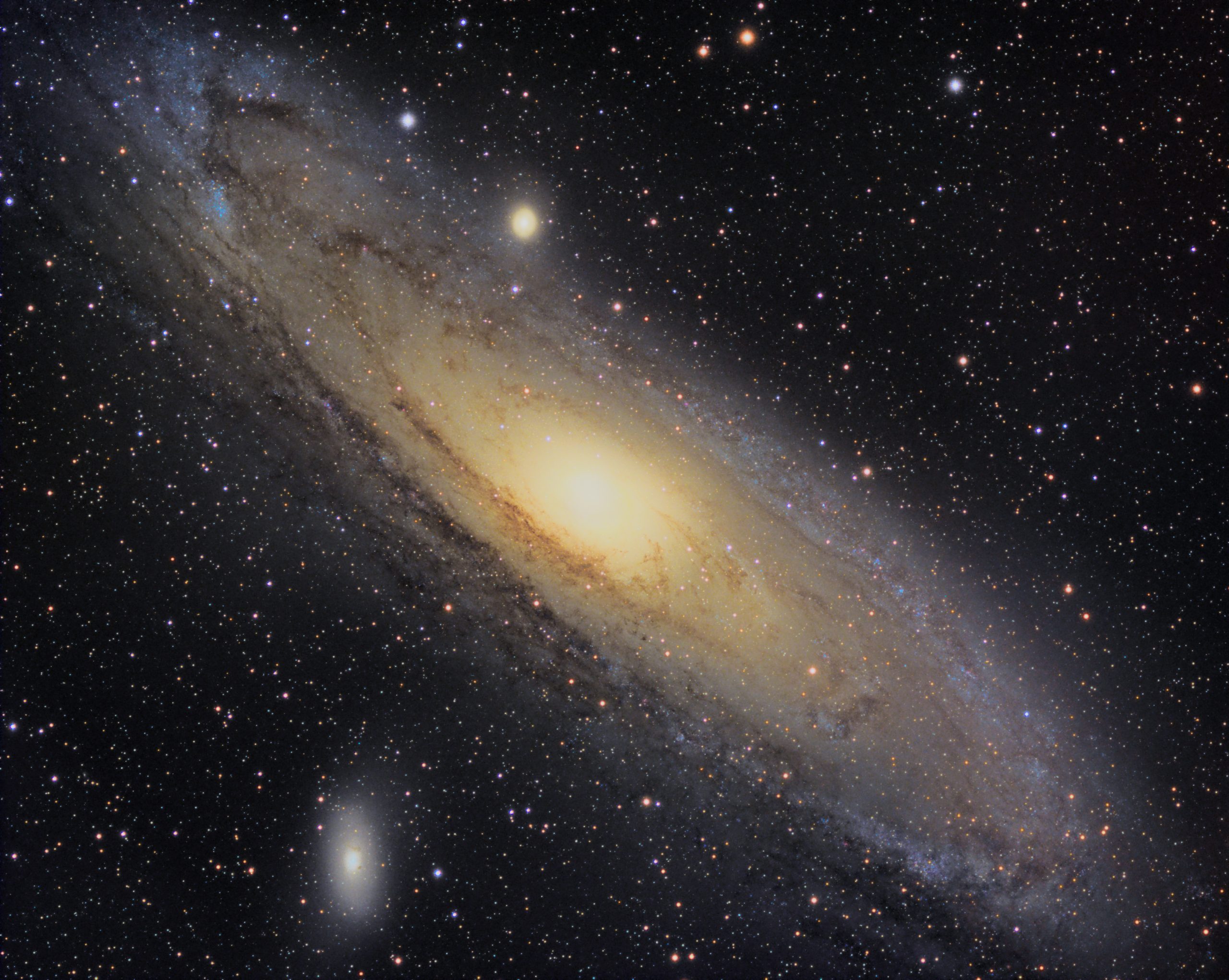True or False?
I am often asked whether an image is true or false colour and it is not unusual to encounter a little disappointment when the answer is the latter. The assumption being that false colour is somehow inferior but both are equally valid just different.
“False Colour” essentially means that rather than mapping Red, Green and Blue data to Red, Green and Blue colour channels, which is the case for “normal” images, we map them to different colour channels. The data and the detail is still real but the different mappings can improve contrast and facilitate a different perspective .
Broadband
I use broadband and narrowband filters for my imaging.
Broadband filters, typically Red, Green and Blue, are used to produce images in a similar way to a phone, or any other colour, camera. These filters produce true colour images as shown in this image of the Andromeda galaxy.
As with all photographs, the results vary depending how the data was processed, there is always a degree of artistic choice involved. If you use several different phones to take the same image the results will all be slightly different as each phone processes the data differently. It is the same with astrophotography.

Narrowband
Narrowband filters are designed to only pass very narrow bandwidths of light to the camera and are tuned to pick up the wavelengths of ionised gases, in my case Hydrogen Alpha (Ha), Oxygen III (OIII) and Sulphur II (SII). The resulting images are often known as “false colour” images and can be used scientifically to identify the different gases within nebula. There is also more opportunity for artistic licence with Narrowband images and contrast adjustments can be used to highlight spectacular structures within gas and dust clouds.
Generally, any image on this site that contains strong blue, brown and / or green will have been taken using narrowband filters and probably processed using the Hubble Space Telescope palette which maps SII to Red, OIII to Blue and Ha to Green. This image of the Soul nebula just uses Ha and OIII filters. Had it been taken with Broadband filters it would be mainly red with some faint blue areas.
